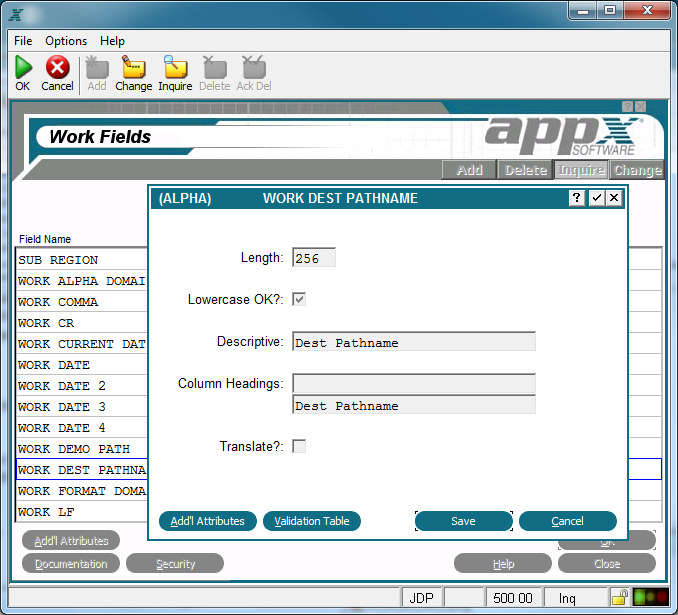Chapter 2-5: Work Fields |
Alpha Work Fields An Alpha work field can contain numbers, letters, and special characters, such as #, $, and &. Examples include names, addresses, certain account numbers or serial numbers, and text. The Alpha work field overlay, shown Domain Work Field Additional Attributes Overlay for Alpha, Text, Token and Date Domains, displays after you complete the entries on the work fields screen if the work Field Type you select is ALPHA.
Alpha Work Fields Overlay The Alpha Work field Specifications overlay contains the following fields: Length designates the number of character positions, or length, of this field.
Lowercase OK? indicates whether or not a modifiable item on an interactive screen can be entered in upper- and lowercase letters. If 'no' Descriptive provides a longer, more easily understood alternative to Field Name, one that is not required to be unique within an application. If blank at all default levels, Field Name is used. Column Hdgs designates up to two lines of column heading text. The APPX output process facility uses this text to generate standard column heading images for Start of Page and Start of Range class frames. For cosmetic reasons, the length of headings should not exceed the length of a field itself. Refer to Standard Column Heading Image for additional information. Translate? Indicates if this domain or field is eligible for language translation. Currently the following field types may be translated (others will have the field protected). It's currently the designer's responsibility to insure that translatable work fields without a validation table are read only. For Alpha work field type, the following options are available as described in the corresponding sections: |
Application Design Manual "Powered by Appx Software"1047 ©2006 By APPX Software, Inc. All Rights Reserved |
